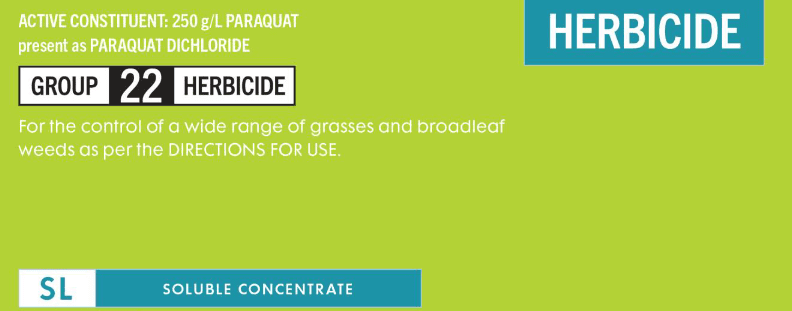
CHANGES to regulations governing how paraquat and diquat are used are expected in the wake of an Australian Pesticides and Veterinary Medicines Authority review of guidelines for both knockdown herbicides.
The extent of the changes is likely to be influenced by submissions received from industry organisations including WeedSmart currently being drafted ahead of APVMA’s October 29 cut-off date.
The July 30 APVMA announcement has caused some alarm among growers and agronomists who rely on one or both herbicides to control weeds in fallow, and desiccate crops, particularly pulses, ahead of harvest.
The “quats”, as they are jointly known, are widely used as part of a double-knock strategy to control weeds as a follow-up to glyphosate, or as an alternative to glyphosate when herbicide resistance is of concern.
They are also effective on hard-to-kill weeds like tall fleabane, and WeedSmart northern extension agronomist Paul McIntosh said the quats played an important in desiccating “fleshy” crops like mungbeans, sunflowers, and soybeans, as well as chickpeas.
“If we lose both of them, we’ll lose some control in pulse crops in terms of harvest preparation and drydown capability,” Mr McIntosh said.
If diquat and paraquat are not able to be used in broadacre farming, Mr McIntosh said the upshot was likely to be increased use of strategic tillage as a means of weed control and/or increased use of residual herbicides, which can bring with them plantback issues.
He is hopeful the APVMA review will find both diquat and paraquat can remain as registered herbicides, perhaps with tighter regulation around their sale and use.
“That could be in a closed retail system, where…AgSafe accredited resellers are the only ones who can stock it for broadacre.”
Mr McIntosh said a closed system on farm to transfer the quats to the spray tank “without you getting a whiff of it” could become requirements following the APVMA review.
“I think that’s a very good idea anyhow.”
Along with WeedSmart, national and state-based farming organisations are expected to make submissions to the APVMA around the use of the quats.
Publication of the final regulatory decision is expected in the week commencing 28 January 2025, and will canvass environmental impacts from both chemicals from the horticultural as well as broadacre sectors.
In announcing its look into both active ingredients on July 30, the APVMA said it was proposing to:
- vary and affirm paraquat and diquat chemical product registrations and associated label approvals where at least one use pattern is proposed to be supported;
- vary and affirm paraquat and diquat active constituent approvals to update the conditions of approval;
- cancel two diquat chemical product registrations and associated label approvals that do not meet the statutory safety, trade or labelling criteria.
The proposed decision includes consideration of all current approved paraquat and diquat active constituents, registered chemical products, and approved labels.
Grain Central: Get our free news straight to your inbox – Click here

HAVE YOUR SAY